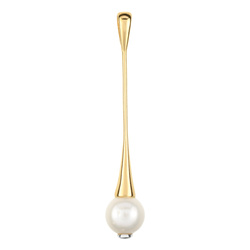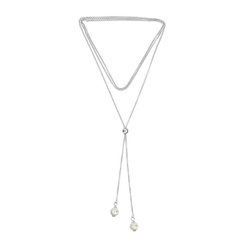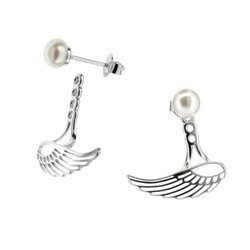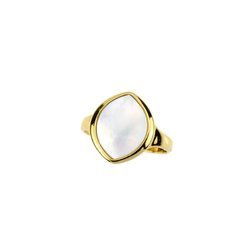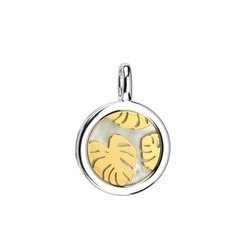Mother of Pearl

Attributes
Mother of pearl is used to make cosmetics due to its healing properties. Additionally, it stimulates emotions and makes feelings more balanced and tuned, and the expression of them easier. It calms anxiety and nervousness. It supports intuition.
In many cultures, brides are wearing pearls on their wedding day as a sign of their purity and devotion.
Origin
Mother-of-pearl is the inner, highly opalescent layer of the shells of some shellfish. Like natural pearls, it consists mainly of calcium carbonate (aragonite) and has similar properties to those of natural pearls. It comes in a variety of colors - most commonly in white, but also in silver, cream, mild yellow, bluish gray, gray and rainbow colors that shimmer in different shades, what is called the iridescence effect.
Around 1910, the era of cultured pearls began in Japan. They are a natural product, but produced with the help of man. Today, more than 90% of the pearls on the market come from these specialized farms.
Name
The name "mother of pearl" comes from the German word: "Perlmuttera", which translated means "mother of pearls". Due to its similar color effects as opal (iridescent colors of blue, green, purple, green-yellow), it is called "sea opal" in the trade.
However, the origin of the name "pearl" is not entirely certain. It may be due to the type of shell (Latin: perna) or its round shape (Latin: Sphaerula).
History
Pearls were first mentioned by a Chinese historian as early as 2,206 BC. Initially, they were mistakenly treated as precious stones like diamonds, emeralds, rubies and sapphires. However, since pearls are of organic origin, they cannot be called stones.
Mother-of-pearl was already used by the ancient Egyptians to create functional objects as well as jewellery. But it was during the Victorian era that its popularity flourished. It is from this period that many valuable items such as caskets, handles, countertops, cups, silverware, holders and cigarette cases have been preserved.
Pearls have always been considered a symbol of power and wealth. They were used by Cleopatra to win a bet with Mark Antony over which of them would serve the most expensive dinner of all time. The Queen of Egypt took off one of her pearl earrings, crushed the gem and dumped it into wine (some sources say it was vinegar). She drank the liquid so prepared. She offered the other earring to a Roman general. He refused and acknowledged Cleopatra's victory.
Astrology
Stone associated with: Cancer

Recommended
